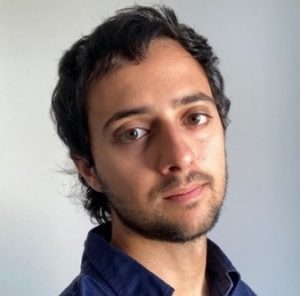 The International Institute for Applied Systems Analysis (IIASA), an independent, international research institute with member organizations on five continents, provides professional development opportunities for science writers from around the world. Founded in Vienna, Austria in 1972 as a means of promoting East-West relations during the Cold War, IIASA has continued to evolve as a forum for promoting dialogue to deal with the even greater challenges of the 21st century.
The International Institute for Applied Systems Analysis (IIASA), an independent, international research institute with member organizations on five continents, provides professional development opportunities for science writers from around the world. Founded in Vienna, Austria in 1972 as a means of promoting East-West relations during the Cold War, IIASA has continued to evolve as a forum for promoting dialogue to deal with the even greater challenges of the 21st century.
Each year IIASA offers science communication fellowships to individuals who will be embedded in all aspects of IIASA’s communication strategies and be invited to interact with its broad range of researchers, who explore topics ranging from climate change and energy security to global demographics and sustainable development.
One of this year’s fellows is Neema Tavakolian, who explains how
Growing up I was never really interested in STEM. Subjects like mathematics and science bored me whereas I could read and write about English literature and history all day. It wasn’t until my first environmental science course in late high school that sparked my interest and passion for subjects like climate change, marine science, and sustainability.
From this moment on, I embarked on my science communication journey finishing up dual BS degrees from The University of Georgia in natural resource management & sustainability and fisheries science. While studying, I have had several opportunities that have led me to where I am today.
Between 2016 and 2017 I worked in the field and lab as a soil and water research technician for two different labs. These experiences helped me understand the process of science and how much data, effort (both physical and mental), and time it takes to do good research. During this period, I also got to work on my science communication skills. I had the opportunity to volunteer at a local zoo educating visitors on conservation and wildlife issues. Late 2017 I further developed my communication skills while studying in Australia and New Zealand during a study abroad program. There we studied and reported each country’s efforts to preserve their natural resources, especially in relation to their tourism industries. Here I began understanding the relevance of proper science communication to policy.
In 2018, I was finally able to combine my interests in science, writing, and policy into one when I sought and was awarded the James W. Babcock Internship Program. This program gave me the opportunity to live and work in Bermuda at the Bermuda Aquarium, Museum, and Zoo as their summer research intern. For three months, I worked on an ongoing project studying the biodiversity and status of Bermuda’s many coral reefs. I spent time gathering my own data, looking at past reports, and doing background research ultimately creating my own final report. This report contained data, references, and my own opinions and recommendations on future Bermudian policy. This is one of the proudest moments in my science communication journey.
Writing a technical science report and writing that very same report but for policymakers and government officials was an enlightening experience for me. Science communication is interesting in that you are not necessarily dumbing something down, but you are taking into account your audience and making sure they comprehend the information in a clear and concise manner. You the science communicator act as this bridge between researchers, stakeholders, policymakers, etc.
It was not until 2020 however, that I realized that there are in fact not enough of these “bridges” in today’s media. While living in the US during the rise of COVID-19 and the most recent US presidential election, I began to see egregious amounts of misleading headlines, misinformation, and clickbait floating all over the internet and mainstream media regarding science. Without proper understanding and communication between researchers, the media, policymakers, and the general public, addressing complex issues is almost impossible. At this point, I decided to break away from corporate America where I was at the time and seriously pursue science communication.
In late 2020 I began freelance writing articles explaining science the way I wanted to, just like I did back in college. Eventually, I came across the International Institute for Applied Systems Analysis (IIASA) Science Communication Fellowship. After reading the program description I knew I had to apply.
The IIASA Science Communication Fellowship has given me the opportunity to improve my science writing and journalism skills greatly with hands-on experience. IIASA fellows are given the opportunity to work on an international science institute’s full communications team contributing towards a range of tasks (editorial work, blogging, social media, creating multimedia content, etc.). We are also able to work closely with researchers at the institute who work on a variety of policy-oriented environmental research. The research done at IIASA is nothing short of impressive and the networking opportunities here have already been incredible. IIASA researchers are involved with issues and problems that are oftentimes too complex or large to be solved by a single country or academic discipline. Being a science communication fellow, you get to be that bridge connecting IIASA research to policymakers and the rest of the world.
Currently, I am still at IIASA having accepted a 6-month extension to the fellowship where I hope to continue to produce content and explain the multifaceted research done here.